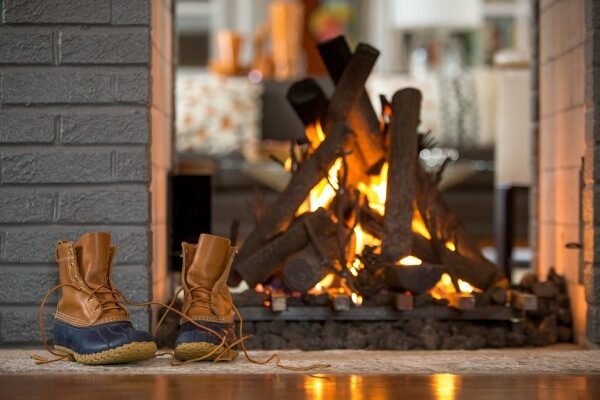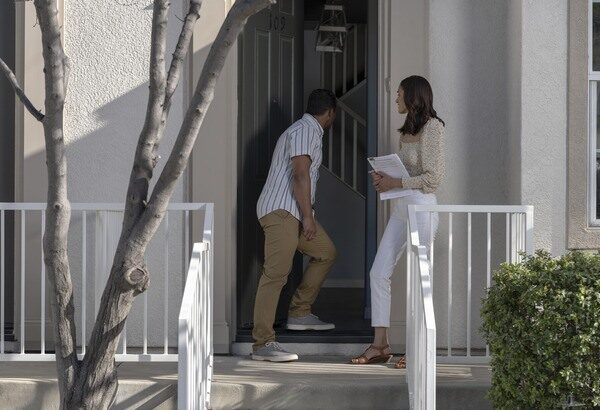
If winter weather catches you off guard and your home is not prepared for heavy snow and cold, you can experience damage ranging from burst pipes to a collapsed roof. Costs for repairs of this scale add up quickly, so prepare in autumn to protect your house during the colder months. Follow these winterizing tips to help avoid costly repairs.
When should you winterize your home?
The best time to winterize your house is in early fall, but it will depend on when cold weather moves into your area of the country. If you’re hiring a professional, know that their schedule may fill up fast, so consider booking them in early summer for the fall. If you’re managing the winterizing yourself, create a timeline, make a checklist of the items you want to tackle and give yourself enough time to work through each task. [1]
Why should you winterize your home?
Winterizing your home brings a variety of benefits. Preparing your home for snow, ice and low temperatures will help prevent damage to your roof, furnace, pipes and plumbing. Winterizing can potentially help save on heating costs. Tuning up your mechanical systems keeps them running efficiently, and sealing windows and doors keeps warm air inside your home once the temperature drops, potentially saving you money. [2]
9 tips for winterizing a house
1. Prevent ice dams by inspecting your roof and attic
Ice dams are sheets of ice that form at the edge of your roof, and keep water from melting snow from flowing into the gutter. Instead, that water can seep into your house and cause damage. Inspecting your roof and attic can help prevent ice dams. To mitigate ice dams, be sure to keep gutters clear, remove snow from your roof before it freezes, ensure that your attic is well ventilated and consider insulating your attic floor. Take precautions if you plan to perform the tasks yourself, or hire a professional instead. [3]
2. Insulate pipes
Winterizing your pipes helps protect them from freezing. If the temperature in your home drops, water may freeze and then expand inside your pipes, which could lead to those pipes bursting. To help prevent this from happening, the first line of defense is to insulate your water pipes before cold weather hits. If you’re personally handling this task, be sure to use the proper safety gear and tools. You can also consider outsourcing pipe insulation to a professional. [4]
3. Insulate your attic
Sealing the attic is a great way to avoid heat loss through your roof in future winters, and to prevent ice and snow damage. Add or replace insulation in your attic to avoid drafts and potentially save on heating costs. Remember to use protective gear if you’re doing this task yourself. Also, inspect the attic and the ceilings below the attic carefully. Look for water stains, which could indicate leaks. Ensure that the attic is vented correctly. This will help prevent ice dams, mold and other winter weather damage. Insulating improperly can create other problems. So consider consulting a professional. [1] [5]
4. Weather-strip and insulate the doors and windows to seal air leaks
Taking the time to insulate the doors and windows can keep warm air inside your home, making it comfortable all winter long. First, inspect all of the doors around your home for drafts, then add a door sweep to the bottom of the ones letting cold air inside.
Next, check your windows. If you feel air leaking in, apply weatherstripping around them or seal the gaps with caulk. Also, try adding window film to help provide an airtight seal and mitigate heat loss. Finally, consider upgrading to energy-efficient windows. It may be a wise investment in the long run. [1]
5. Inspect the furnace and chimney
It’s important to ensure that your heating system is operating effectively and safely. A poorly maintained furnace can produce dangerous amounts of carbon monoxide, an odorless, colorless gas that can cause flu-like symptoms, confusion and even death.
If you live in a four-season climate, it’s best to service your furnace twice a year so it’s running efficiently in summer and winter. A service tech can also replace the furnace filter. If you have a wood-burning fireplace, be sure to have your chimney inspected by a professional to remove buildup such as creosote. If allowed to build up, creosote can be a fire hazard. [1] [6]
6. Protect your deck and patio
Winterizing your deck and patio will help ensure that it lasts for years to come. First, clean and inspect the area. Be sure that no bolts and fasteners are loose. Look for cracked concrete or splintered boards. During cold weather, water can enter cracks and then freeze, leading to damage. You may be able to do simple fixes yourself, but if you see structural damage, call in a professional.
One of the best ways to protect your wood deck from the elements is to seal it. Handheld sprayers make the process a bit easier if you’re doing it yourself. In addition, it’s important to keep leaves, snow and ice off your deck and patio for safety purposes and to help avoid staining and damage. Use a broom or shovel to remove leaves, debris and snow, and try ice melt to get rid of icy patches. [7]
7. Clean out your gutters
Cleaning your gutters is an important task to complete before snow and ice arrive. Gutters get clogged with leaves, branches and acorns throughout the fall. When that debris obstructs gutters and downspouts, it can restrict water flow when snow and ice begin melting in late winter or early spring. This can cause ice dams in your gutters, which could eventually result in water damage inside your home. Be sure to clean out your gutters on a regular basis, especially after all the leaves are off the trees and before winter arrives. [2]
8. Purchase winter supplies
Blizzards and severe storms can come with relatively little notice. Thus, it’s important to be well-stocked with supplies before they hit so you can stay safe and prepared. Be sure to:
- Ensure your snowblower works, and has gas and fresh engine oil
- Keep an ice-melting compound on hand to remove ice from your driveway and sidewalks
- Consider purchasing sand; it can provide traction on your driveway and sidewalks
- Stock up on ice scrapers and shovels
In case of a power outage:
- Have working flashlights, batteries and a weather radio at hand
- Stock up on water and food such as power bars and dried fruit
- Don’t forget to have extra pet food available [2][5]
9. Tap a professional to help with house winterization
While you can tackle many home winterizing projects on your own, the main question to ask yourself is: Should you? It’s always good to know when to call in a pro. If the task is complex, potentially dangerous or requires a licensed electrician or plumber, it’s best to outsource it to a professional. Also, consider whether you have the experience necessary to work on DIY projects, have access to proper tools to complete the job and enjoy doing these types of tasks. If the answer is no, call a professional. [8]
For more information on how to keep yourself, your car and your home safe during the winter, read our winter preparedness and safety tips guide.
As you finalize your plans to winterize your house, make sure you have the proper amount of homeowners insurance coverage. Learn more about the importance of property insurance and how Nationwide can help.
Sources:
[1] “How to Winterize a House,” forbes.com/home-improvement/plumbing/how-to-winterize-a-house (Accessed July 2024).
[2] “Winterize a House in One Weekend,” familyhandyman.com/article/how-to-winterize-your-home-in-a-weekend (Accessed July 2024).
[3] “How to Prevent Ice Dam Damage to Your Roof and Home,” blog.nationwide.com/home/home-maintenance/how-to-prevent-and-remove-ice-dams (Accessed July 2024).
[4] “What to Do if Pipes Freeze & How to Thaw Frozen Pipes,” blog.nationwide.com/home/home-maintenance/prevent-thaw-frozen-pipes (Accessed July 2024).
[5] “14 Ways to Winterize Your Home,” lowes.com/n/how-to/winter-preparedness-checklist (Accessed July 2024).
[6] “What is carbon monoxide?” epa.gov/indoor-air-quality-iaq/what-carbon-monoxide (Accessed July 2024).
[7] “How to Protect a Deck for Winter and Use It in Cold Weather,” lowes.com/n/ideas-inspiration/protect-enjoy-deck-in-winter (Accessed July 2024).
[8] “Should you DIY or hire a professional?” nationwide.com/lc/resources/personal-finance/articles/when-to-hire-a-pro (Accessed July 2024).
Disclaimer:
The information included is designed for informational purposes only. It is not legal, tax, financial or any other sort of advice, nor is it a substitute for such advice. The information may not apply to your specific situation. We have tried to make sure the information is accurate, but it could be outdated or even inaccurate in parts. It is the reader’s responsibility to comply with any applicable local, state or federal regulations. Nationwide Mutual Insurance Company, its affiliates and their employees make no warranties about the information nor guarantee of results, and they assume no liability in connection with the information provided. Nationwide and the Nationwide N and Eagle are service marks of Nationwide Mutual Insurance Company. © 2025 Nationwide



